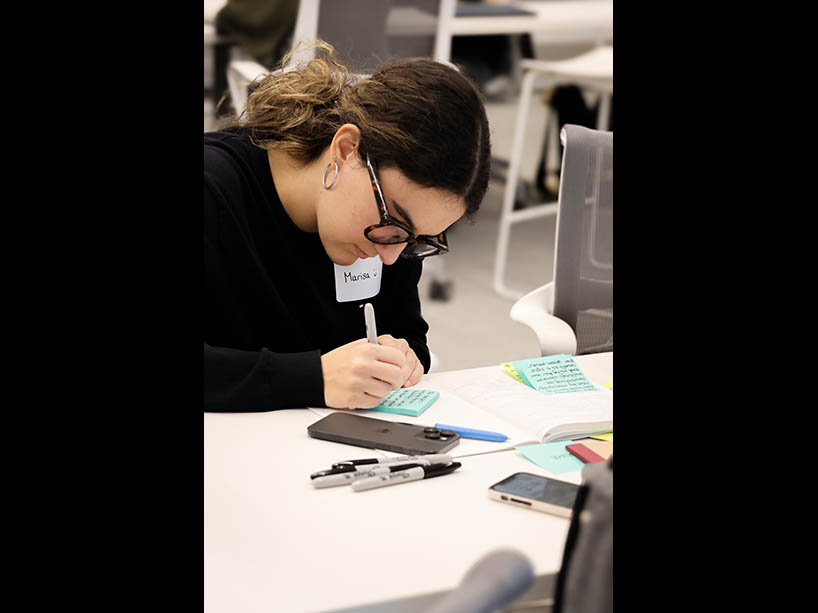Reading Week course applies real-world approach to interdisciplinary projects

Hands-on course SCI888 focused on applying knowledge and skills to real-world issues. Photos by Gabriela Macias.
While some students took a break from their classes during reading week, others earned a full credit in a 40-hour class over the break. The students worked in interdisciplinary teams to redesign inclusive spaces that address NIMBYism – an acronym for the phrase “not in my back yard,” which is characterized by resident opposition to proposed developments in their local area.
38 students participated in the SCI888: Evidence-based Innovation course, offered by the Science Discovery Zone (SDZ), and were asked to focus on a problem within the context of NIMBYism such as homelessness, noise pollution and land use regulations.
For fourth-year biomedical sciences student Marisa Chiaravalloti, the project challenged her to think on her feet and quickly develop valuable problem-solving skills.
“I learned a lot in a short period of time,” says Chiaravalloti. “I loved the brainstorming sessions we had because it gave us the freedom to come up with our own ideas and listen to what others had to say. I would definitely recommend this course to other students who are interested in learning career boosting skills in a non-traditional class setting.”

Marisa Chiaravalloti was motivated to take the SCI888 course because she is interested in innovation and entrepreneurship in the biotech space.
The course is a hands-on experience, says Paul Hacking, acting manager of the SDZ, because students get out of their seats to brainstorm by writing on sticky notes and whiteboards in a collaborative environment. Throughout the week, they are immersed in the one problem they have set out to solve.
“The design of the course gives students the ability to focus and dedicate themselves to problem solving within the context of NIMBY-ism,” says Hacking. “Students have time over reading week to fully commit their schedules to the course and free up the rest of the academic calendar for the year.”
Hacking says the facilitators chose this topic because NIMBYism is a common occurrence. Since the topic is broad, students can apply an interdisciplinary approach where the solutions are not one-size-fits-all.
Through collaboration with their small groups, students came up with different approaches to the problem and gathered evidence from the community to support a potential solution. At the end of the week, they presented their solutions and explained how they applied evidence-based research.
Bryan Koivisto, an associate professor at the department of chemistry and biology and the facilitator, says he is excited to offer students an opportunity to complete a course with minimal impact to their daily lives. Like a hackathon, students ideate, brainstorm and build off of each other’s energy.
The most important element of the course, says Koivisto, is allowing students to develop transferable skills that give them the confidence to solve big problems in teams and value the benefits of collaboration.
Related stories:
